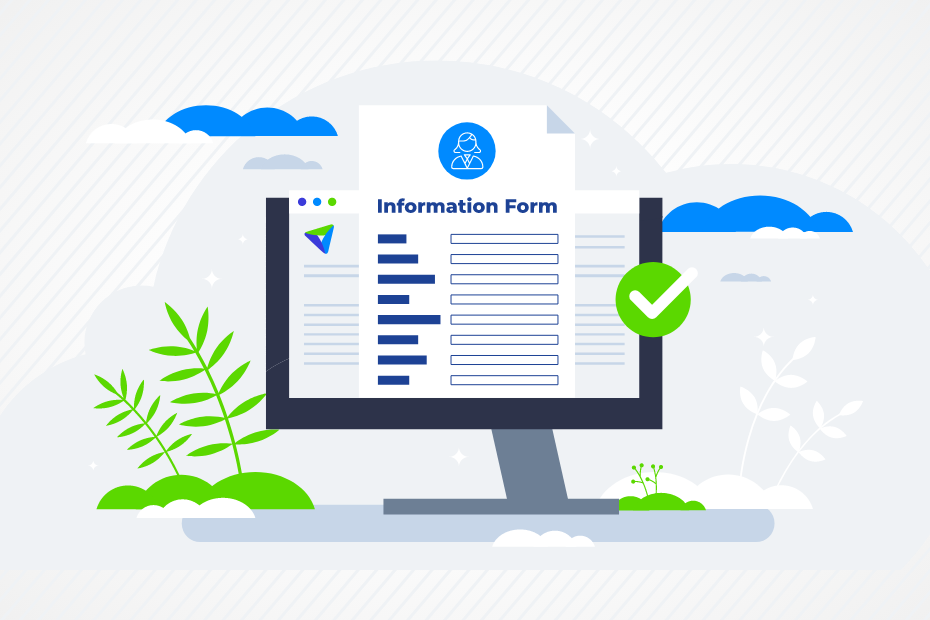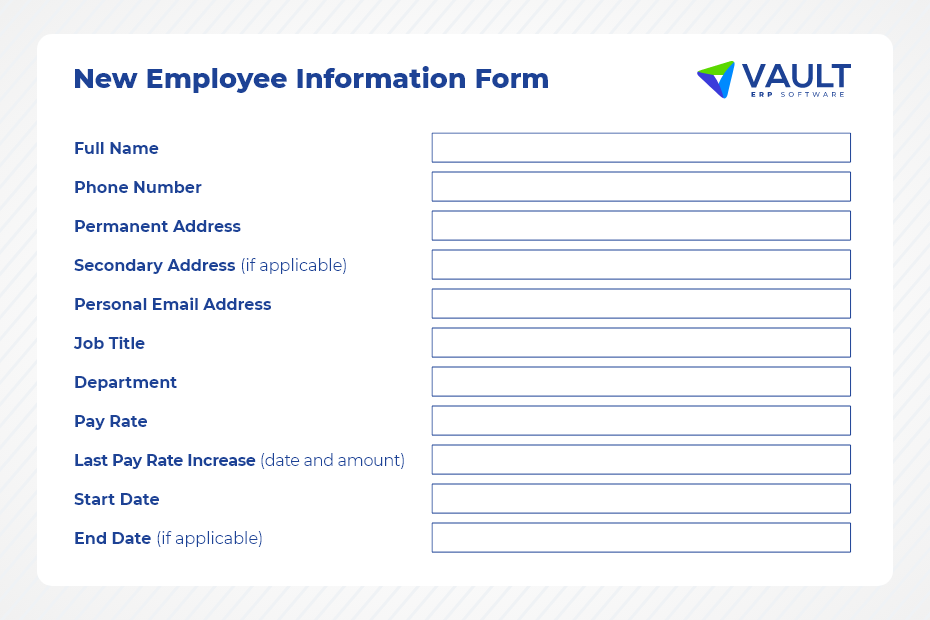
An employee information form is an essential document in HR. As a result, it’s important to know how to do it right. In this article, you can find out what to put in an employee information form, what an employee information form looks like, and how you can use automation to take the hassle out of processing documents.
What is an employee information form?
HR departments are legally responsible to keep an up-to-date record of all employees’ information. An employee information form is a document holding the essential information about an employee. It should be filled out for every new hire on day one and updated if anything changes. Most employee information forms contain only the basic information and don’t go into too much detail. The aim is to be able to find key information quickly when you need it without having to dig through complicated records.
It is important to store an employee’s information even after they have left the company, as you might still need to contact them for various reasons. Employees records serve as evidence should any legal disputes arise in the future.
How to create, manage and use employee information forms
You must have an employee management record system to manage and store personnel information securely in an easily accessible location. Implementing a cloud-based HR solution is the best way of managing employee records. System administrators can create different levels of access to ensure confidentiality.
An automated HR solution will streamline and sync all information and communications on one unified platform and greatly improve communications between HR and your workforce. You can eliminate the necessity for a huge number of manual entries, save time, and reduce human error. With the right HR automation solution, you will be able to access and manage personnel information at a speed you never imagined possible.
How to use employee information forms
You can use an employee information form as an employee profile or customize it to your business’ needs. You will need it to initiate the onboarding process and set up accounts. Depending on your industry, recording the last mandatory training or performing a security review on the employee information form can provide a quick look at upcoming due dates without having to search for the information somewhere else. The employee information form is the first document you would look for in case of an emergency.
Read more about the basic information you can input in Vault ERP profiles here.
What to include in an employee information form
The key information collected for an employee information form will depend on your business needs and your local laws, but a basic employee information form typically includes the following:
1. Personal information
Full name, date of birth, home address, telephone number, work and personal email address and social security number.
2. Job information
Job title, employee ID, department, manager, type of contract, start date, salary, last pay increase, last security review and termination date.
3. Emergency contact
Contact’s full name, primary phone number and relationship to the employee.
4. Special medical needs
Allergens can cause a severe reaction in some people (e.g. peanuts), others may depend on insulin or have seizures and rely on help from others. Keeping such information on file can save a life. Medical conditions are classified as sensitive information, and you should obtain employee’s permission to store their information.
5. Other industry relevant information
Some industries collect job specific, sensitive information about employees. For example, aircraft pilots must pass rigorous health checks and teachers undergo a comprehensive criminal record check. The results will be kept on employees’ files.
Collecting employee information: dos and don’ts
Dos
Think carefully about what data you really need to collect, how to use it and who has access. Does your organizational culture align with the ethical use of data? Communicate to employees about which data is stored and why. You could use a checklist to determine what information about employees your HR department needs to collect and how it should be used. There is a chance that some information you collect may be obsolete.
Don’ts
Avoid collecting sensitive information such as race, ethnicity, religion, political memberships, sexual orientation, biometrics, health conditions or trade union membership. If employees choose to answer any of the above, you will need to obtain their permission to store the information. Keep in mind you need to comply with local data protection laws and must avoid unauthorized access to employee’s information.
Example of an employee information form
You can find below just one example of how an employee information form can look. While the necessary entries might vary depending on the needs of your organization, there are some fields which are commonly present in an employee information form.

HR automation for employee information management
Automated HR software reduces manual entries to a minimum, allowing you to complete forms more quickly and avoid wasting time on repetitive admin tasks.
Choosing the right automation tool is essential. Find our top 7 HR automation tools here.
HR workflow automation will make your HR department and your employees happy. Transparency, consistency in task completion and improved user experience will be a huge benefit to your organization.
Read on: Fundamentals of human resource management.
If you choose a modular ERP system to manage your workforce information, you can automate as little or as many HR processes as you want at a certain point in time. For example, you can automate the hiring process, leading to improved chances of hiring the right candidate.
HR onboarding process automation will provide new hires with all information they need to know, from a welcome letter to taking them step-by-step through your work processes and requirements. The new hire can onboard themselves without much human help, whilst HR or a supervisor can step in if necessary, or just to check how they are doing.
The full spectrum of HR modules allows you to create employees’ profiles, upload documents, manage contracts, payroll and absence, monitor employee performance, collect feedback, allocate projects, track time and more.
Rest assured, HR automation will leave generous room for the HR professionals to focus on strategic tasks and improving relationship with their workforce.
Final thoughts
Keep an open mind. What might be seen as an inappropriate question to ask today may be the trend of tomorrow. For instance, a large number of employers today proudly embrace Equality, Diversity, Inclusion and Belonging as part of their core business values, but if the information to prove this is filtered out (race, ethnicity, religion, sexual orientation), important metrics are missing. Workforce demands are changing and work practices and work culture with them.
Employee information forms made easy with Vault ERP
Filling out and updating employee basic information form with Vault ERP is incredibly easy. You can fill out the form as it is, or we can customize the fields for you according to your preferences.
What sets our employee information form apart from other vendors are the options to record currency, time zone, and company. If you manage more than one company and operate across borders, the functionalities of Vault ERP are ideal for your business.
All fields aside from personal details contain dropdown menus so that no typing is necessary. Fields such as agreement length, position, office, and security level will be set by your administrator; this way, you enter the information with one click by selecting the relevant item from the list.
Creating a new personnel profile has never been easier and faster. You can create a standardized, well-structured information database which is easy to use and access. All company employees appear on one dashboard, and with few clicks under settings you can decide how much or little information you want to be displayed.
Don't hesitate to get in touch to find out what we have to offer.
